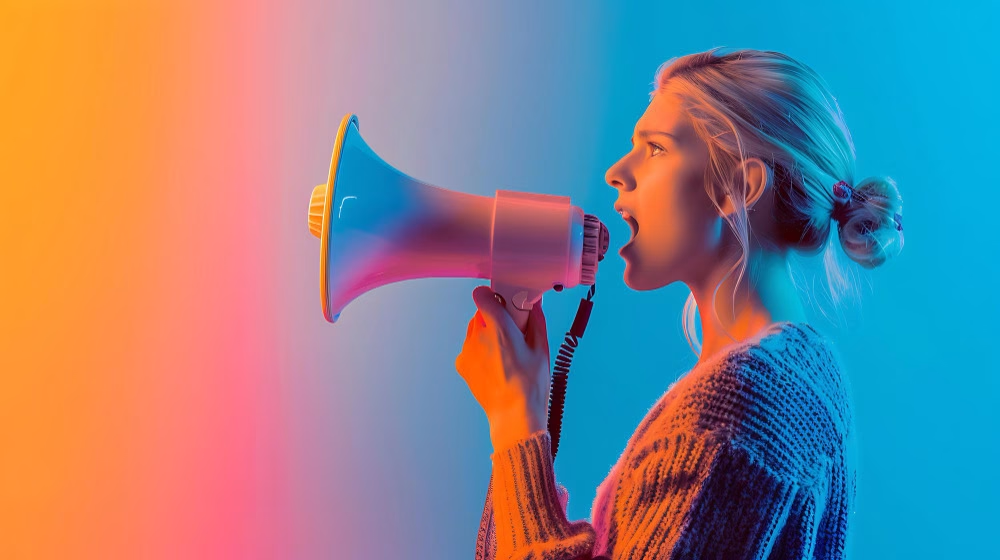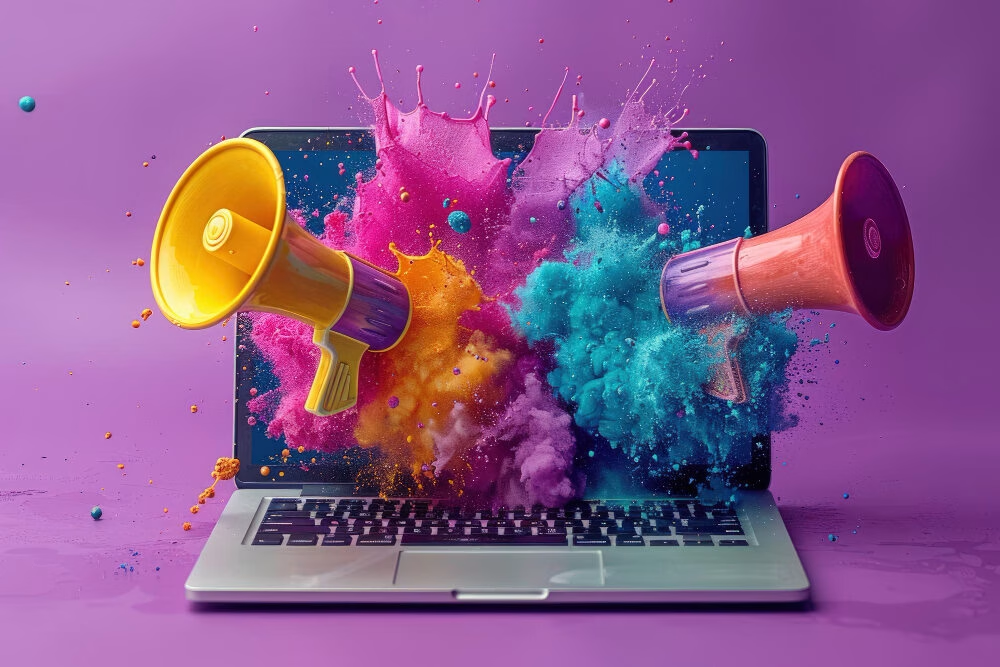
Scrolling through any social media feed now, and you will see it. Brands tweeting like real people, fast food chains picking fights in the comments, corporate accounts making memes that would’ve been questionable at least, a few years ago.
That is unhinged marketing, and this new strategy is changing the way brands interact with consumers, and how people connect with brands.
Unhinged marketing isn’t chaos for the sake of attention, but rather a new kind of honesty. It works because it feels human, and is liberated from the constant chase for perfection. Brands that say something raw, edgy, or incredibly self-aware can reach a huge audience even faster when every other campaign is polished and perfected.
People in general, but social media users in particular, can smell performance from a mile away, and some of them aren’t there for it. Authentic experiences, insights, and communication is what they want. For a brand to talk to them, for their messages to sound like someone actually typing them.
What brands are doing when leaning into this unfiltered tone is rethinking what credibility looks like. It’s no longer about being flawless, but being real, even if it means being a little unhinged.
In this article, you’ll see how unhinged marketing became a powerful strategy for building authenticity and driving engagement, and why being a little less polished can make brands more relatable, memorable, and real.
The Psychology Behind Unhinged Marketing

With people scrolling more and faster, you have the first three to five seconds to capture their attention, and channel it towards your brand. You can play it safe with traditional marketing, or play with emotion, create a moment of surprise, or confusion, that every brand is fighting for.
When a brand posts something off-script, unexpected, unhinged, it breaks the pattern of social media marketing. That interruption triggers curiosity, and that’s what keeps people interested and looking at you (your brand).
Truthfulness is also a factor, as perfect messaging feels staged, rehearsed, and most people don’t feel compelled to that. To be spontaneous is to be honest, and not try to sell right away. That’s what people resonate with, at least according to Stackla Consumer Content Report. The report from 2021 states that 86% of people consider authenticity to be the most important metric when deciding which brands to support.
The unpredictability of unhinged marketing keeps consumers and followers entertained, and authenticity is linked with credibility towards the product or brand.
The Evolution Of Brand Tone

For years now, but with a couple of exceptions, brands spoke like official announcements with a product attached to them. Every word in a campaign was reviewed, approved, and at the end stripped off of every personality before it saw any placements.
This was okay back when viewers had less options and less noise. Then the internet became a thing, and social media marketing took over, which made people pull back on brand voices that sounded like they were written by a board of directors (imagine an uptight group of people in suits, of course).
When big brands started talking like real people, the real shift in brand communication started to happen. For example, when Wendy’s Twitter (now X) page became a roast and meme heaven in 2017. Not only that, but the brand made some fundamental changes in the way fast food chains communicate with customers and competitors. Brand quickly caught on, as the strategy made Wendy’s 300k followers in just six months.
Netflix is also one of the pioneers of unhinged brand communication strategy, as can be seen on their social media accounts for years back. All this led to formality being viewed as distance, not professionalism. The moment a brand tries its hardest to put every product where it should be, it’s going to appease only a fourth-grade teacher, not real customers that crave connection.
Audiences reward brands with their attention when they show up as personalities, not panels with information. This change happened seemingly overnight, but it actually came from the human desire for transparency and relatability, in a world full of perfectly curated stories that we are somehow not living.
The Rise of Unhinged Brand Strategy
When brands realised that personality is what makes those KPIs surpassed, the question became how to scale without losing the one thing the internet is famous for taking – control.
Not long after smart and funny community management became a completely developed marketing strategy. Marketing teams worked around the clock to build playbooks for humor, empathy, internet meme culture, and even chaos, as these frameworks obviously made authenticity repeatable.
Unhinged brand strategy was a reaction to the need to reconcile freedom and structure, challenging the notion that creativity and consistency cannot coexist.
From Fun To Strategy

If something looks like chaos online, but you still buy into it, it’s often the result of structure and strategy done right. What we see as brands with unhinged marketing and communication style, plan for spontaneity and whimsical improvisation, and the balance in strategy is what makes you stop and take a second look.
The most irrational-looking brands have carefully selected marketing teams that are fully aware which jokes fit, which topics are off limits, and how far to push before it becomes performative. Consistency and smart planning are what makes unhinged marketing stick.
For example, low-cost airline company Ryanair, has their entire tone somewhere between blunt honesty and straight up trolling. But what makes the strategy work is they still deliver on their promise of cheap flights to attractive destinations. They’re not trying to please their customers, or make them think they are above the passengers in any way. They are unmistakably themselves, authentic, and at the same time incredibly funny and relatable.
Duolingo has a pretty similar strategy. The big likeable owl has undeniably an unhinged sense of humor, but it’s a part of a whole. Unhinged marketing strategy has its place in the brands image and mission of keeping language learning fun and engaging. That is why it’s not chaos, and why it doesn’t look forced.
Audiences can smell desperation from a kilometer away, but these brands aren’t trying to go viral, they’re just speaking their online language, with structure, research and plan.
Unhinged Marketing Done Right

You know what they say, every unhinged brand is unhinged in its own way. But they all share one thing, and it’s strategy disguised as chaos.
Slim Jim has catapulted the meme-native tone, and as a result, their Instagram looks like a group chat that lights up your phone. Inside jokes, obscure memes from the depths of the internet, absurd captions. The messages are unfiltered, but consistent, and that’s what makes the following number go up.
Liquid Death sells canned water, but looking at their instagram, they could be confused as a rock band on a tour. The packaging is metal, the fonts and imagery, the ads they publish are insane, and their fans actually collect the cans. The tone is rebellious, funny, anti-corporate, and that makes the product as well. Behind it all is a tight brand system that turns absurdity into a joke everyone wants to be a part of.
Ryanair is hilarious in its honesty and self-awareness, as their TikToks lean into the company’s reputation. They joke about the problems their passengers usually come across when flying with them, but somehow it’s not offensive, it’s funny.
Another good example is Scrub Daddy, a sponge company that turned into a content powerhouse. The marketing team leans into playful weirdness via TikTok skits, pop-culture remixes and references, and quick reactions to comments that feel more like a conversation than a sales pitch. Their brand is proof that even a cleaning product can thrive through personality-driven storytelling.
These brands show how authenticity influences marketing, and how to scale when there is structure and clarity. The more human they sound, the more freedom they have to experiment without losing the trust from their audience. The unhinged doesn’t blur the message, it amplifies it.
The Risks and Boundaries of Being Unhinged

The freedom that makes unhinged marketing powerful is a two-way street. Because of that freedom, the line between being witty and being ignorant can be crossed without even realizing, and what makes that brand stand out can burn quickly. Many brands have tried to make structure out of chaos, but failed.
Burger King was shortly in the center of negative online attention, after a questionable tweet on International Women’s Day. It was intended to be a tease for a campaign promoting a cooking scholarship for female employees, but the fact that it went beyond an idea from their team’s marketing meeting demonstrates that not everyone can execute unhinged without being crass.
Brands that get unhinged marketing look like they’re having fun, not trying too hard for reach and engagement. Teams that understand their limits can test the waters without losing credibility and trust. They also know that there is no marketing without a plan or a strategy.
Conclusion
Brands who caught the wave of unhinged marketing are the ones that aren’t chasing virality, but building trust through personality. They know the mess works only when it’s intentional, and it comes down to the very simple idea. People want to connect with something that’s close to them, that feels alive, and shares their hopes and disappointments.
It doesn’t have to be perfect. If it’s rough around the edges, it makes the brand and messaging even more relatable.
At Ginger IT Solutions, we know that not every brand needs to go “unhinged” to stand out – but every brand does need a story that feels real. When that bold, offbeat tone fits, we help shape it into a strategy that captures attention and builds genuine connection. And when it doesn’t, we craft something that reflects the brand’s true voice instead of forcing a trend.
Our focus isn’t on being loud – it’s on helping brands communicate with authenticity, intention, and impact through smart digital marketing and social media strategy.

